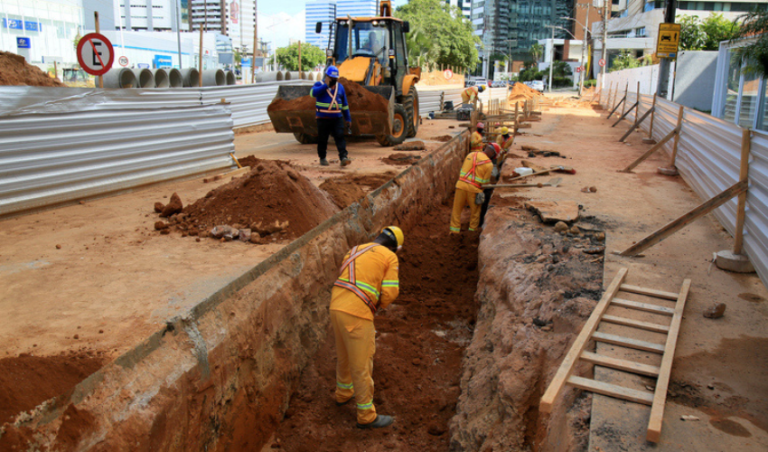What Happens When Technology Works in the Background
Ever notice how the best tech is the kind you stop noticing? The thermostat that keeps your home comfortable without you touching it. The navigation app that reroutes around a traffic jam before you even ask. These aren’t loud, flashy features. They’re quiet, almost invisible, and they make daily life easier without demanding attention. In this blog, we will share how background tech shapes experiences in ways we often overlook.
When Tech Stops Performing and Starts Supporting
The public conversation around technology often focuses on what’s new, what’s big, and what’s next. AI, wearable sensors, quantum processing—there’s always a race to spotlight the loudest innovation. But most of the real impact happens behind the scenes. It’s in the automation that prevents errors, the synced data that skips duplication, and the silent systems that keep workflows moving even when no one’s watching.
These aren’t the kinds of things people brag about in a product pitch. You don’t hear a manager tell their team, “Our server downtime went down 3% last quarter!” But these quiet wins save time, prevent burnout, and reduce risk. In sectors where structure, precision, and accountability matter—like justice, social services, or healthcare—the value of background tech goes beyond convenience. It becomes structural.
Take a closer look at integrated solutions used by professionals managing complex caseloads or compliance-heavy environments. Platforms that blend task automation, real-time data, and seamless coordination—without creating more complexity—are making a real difference. Software from platforms like https://www.correcttech.com/ reflect this shift. They don’t exist to steal the spotlight. They exist to keep people and systems in sync without needing constant input. And when tech supports without overwhelming, it frees people to focus on their actual work—not chasing forms, fixing errors, or repeating tasks that should’ve run themselves.
Efficiency That Doesn’t Look Like Efficiency
You can usually tell when bad tech is in play. People drag through bloated interfaces, copy the same data into six fields, or double-check something a system should’ve flagged. It feels like walking uphill with a backpack full of bricks. Ironically, we’ve normalized that in many industries. Long hours and frustrating workarounds have become signs of “doing the job right,” instead of signals that the tools are wrong.
Good technology breaks that cycle. It quietly maps what people need, trims what they don’t, and gets out of the way. But since it’s not flashy, its value can go unnoticed. A probation officer doesn’t post on LinkedIn about a clean case audit. A caseworker doesn’t take a victory lap for finishing reports early. Yet the systems that made those outcomes possible—without creating new friction—deserve the credit.
This isn’t about speed for speed’s sake. It’s about consistency. When routines run without hiccups, when information flows without blockers, when the right people see the right data at the right time—everything improves. Mistakes drop. Communication improves. People trust the tools more because they stop creating problems and start solving them.
It’s similar to how electricity works. No one praises the wiring when a light turns on. But you notice the second something flickers. Background tech should be built the same way: silent, solid, and smarter than it looks.
Making People the Point Again
There’s a trap in designing tech for performance metrics. Too often, tools get built to impress administrators or executives who’ll never actually use them. The end result is a system that looks great in a dashboard but frustrates the people who depend on it daily.
Technology that works in the background flips that script. It doesn’t ask for constant interaction. It supports from underneath. For someone juggling dozens of clients, cases, or daily deadlines, the biggest win isn’t more features—it’s less friction. Auto-filled forms, instant access to records, smart alerts before something goes wrong—these aren’t bells and whistles. They’re lifelines.
The more tech handles the routine, the more humans can focus on what only they can do: listen, reason, coach, decide. A community corrections officer isn’t just pushing paperwork—they’re working with real people in complex situations. When systems stay out of their way and offer smart support in real time, the human part of the job can finally take center stage.
This re-centering has broader implications. When technology stops being the main character, service improves. Clients aren’t just case numbers—they’re seen. Staff aren’t just data entry machines—they’re engaged professionals. A lot of friction in public systems comes from tech that demands attention instead of offering help. When that flips, satisfaction rises—for everyone involved.
Building Trust Without Making Noise
Trust in digital systems is fragile. One glitch, one lost file, one hour of downtime can undo months of confidence. So when tech works in the background and simply does what it’s supposed to—without fanfare—it slowly builds that trust. And in high-stakes fields, trust is currency.
But trust doesn’t grow from promises or brand slogans. It comes from the everyday stuff: systems that don’t crash during peak hours, records that load when you need them, forms that don’t erase data halfway through. These aren’t headline features. But they matter more than most people realize—until they’re gone.
Modern platforms are catching on. They’ve stopped chasing novelty and started focusing on reliability. And in many ways, this is where real innovation lives. Not in doing something wildly new, but in doing the old things so reliably and invisibly that users forget how painful those tasks used to be.
There’s something almost luxurious about a tool that just works. No setup hell. No reboot dance. No convoluted menu tree. Just open, act, move on. It makes room for trust, and with trust, comes scale.
The Shift Away from Loud Solutions
In a time when every app wants your attention and every software brand claims to be “disruptive,” it’s refreshing to see tools take the opposite route. Not to dominate your screen, but to quietly shape your day from the edges. Not to dazzle with dashboards, but to blend into workflows so seamlessly that people forget the pain points that came before.
This shift—toward quiet, background-first tech—signals a more mature approach to design. It’s not about proving how powerful a system is. It’s about proving how little it has to get in your way to be valuable.
The best systems aren’t invisible because they’re basic. They’re invisible because they’ve done the hard work of fitting human needs without demanding constant input. They run quietly, predictably, and securely—letting the humans they support focus on the stuff that can’t be automated.
When technology works in the background, it doesn’t diminish its importance. It just changes where its value shows up. Not in the features it offers, but in the space it gives back. Not in what it says, but in what it lets people do. And for anyone working in complex, fast-moving environments, that’s the kind of tech that’s worth everything.
Keep an eye for more latest news & updates on Gravity Internet Net!






